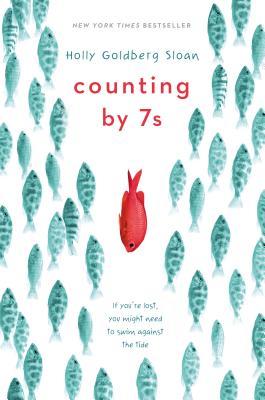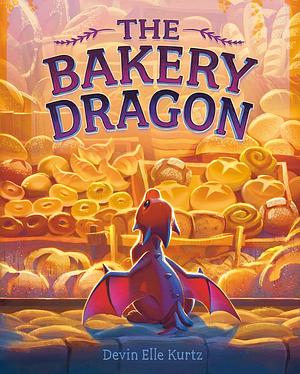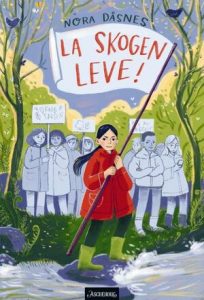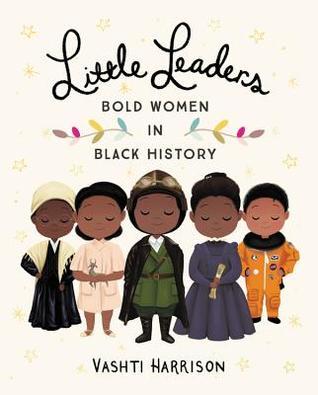 In the summer of 2018 the eldest brought a classmate along on a trip to the cabin. That classmate brought books along, as you do, and one of them was Counting by 7s by Holly Goldberg Sloan, which was left on the living room table and which I picked up and started reading late one evening when I had finished my own book but was not quite ready to call it a night. I read just a few pages, but enough to tell me I wanted to read more, and some time later I asked to borrow the book. When I picked it up again this summer I started at the beginning, but this time I finished what I’d started.
In the summer of 2018 the eldest brought a classmate along on a trip to the cabin. That classmate brought books along, as you do, and one of them was Counting by 7s by Holly Goldberg Sloan, which was left on the living room table and which I picked up and started reading late one evening when I had finished my own book but was not quite ready to call it a night. I read just a few pages, but enough to tell me I wanted to read more, and some time later I asked to borrow the book. When I picked it up again this summer I started at the beginning, but this time I finished what I’d started.
Counting by 7s is the story of Willow Chance. She lost one set of parents when just a baby, but was adopted by a loving couple. Unfortunately when she has just started middle school they are both killed in a car crash, and Holly is left without any relatives or other adult support network. She is promptly taken in, temporarily, by the Nguyen family, consisting of Patti, Mai and Choung-Hoy, on the insistence of Mai who has come to know Willow because her brother sees the same (not very good) councellor, Dell Duke, as Willow. Willow is seeing a councellor because she was suspected of cheating when she got all the answers correct on a test despite seemingly not paying attention in class at all. Willow is… not like other kids.
I posted on Instagram that I had been intrigued by the start of the book and that half-way through I was still intrigued. And so I remained, until the very end, when the story fell flat on its face and I was snapped out of my suspended disbelief and realised that I’d been uneasy about aspects of the story for quite a while. Regarding the ending I will refrain from too much comment as it will spoil the book entirely, but this Goodreads review by TheBookSmugglers (BEWARE SPOILERS, obviously) sums my feelings up perfectly.
Willow is charming as a character in a book, in real life she may be harder to deal with. There is never any actual diagnose mentioned in the book (if there is, I missed it), but it is pretty obvious that we are intended to read her as being «on the spectrum», i.e. Asbergers/Autistic. Her interests are not those of other kids her age and her inability to pretend to care about «normal kid things» has left her pretty much friendless.
I tried to roll with it.
But what I learned and what was being taught had no intersection.
While my teachers labored over the rigors of their chosen subject, I sat in the back, pretty much bored out of my mind. I knew the stuff, so instead I studied the other students.
I came to a few conclusions about the middle school experience:
CLothing was very important.
In my opinion, if the world were perfect, everyone would wear lab coats in educational settings, but that was obviously not happening.
The average teenager was willing to wear very uncomfortable attire.
(Page 33.) And so a new start at a new school has not really helped, but once she gets involved with the Nguyens and with Dell Duke and the fortuitous taxi driver Jairo, she subtly gets under their skins and starts to change their lives for the better. Or… not so subtly, perhaps. I’d be inclined to agree with another Goodreads review, this one by Shelley:
An excellent introduction to the Manic Pixie Dream Girl phenomenon for kids. Watch the quirky, plucky, feisty, vocabulary obsessed orphan genius change the lives of everyone around her, just by existing. Whoo.
It’s all a little too neat. There is also an element of slightly troublesome, well, exoticism. Willow is «a person of colour», the Nguyens are of Vietnamese descent and, well, lets say it doesn’t feel much like an own voices story (which it isn’t, and doesn’t pretend to be, I suppose).
So.
I’m not saying «Don’t read it!» It’s not terrible, and it has been amply blessed with awards, so a lot of people like it. But there are better books out there. Ok, so maybe I am saying «Don’t read it.» I’m not sure the initial charm makes up for its somewhat serious drawbacks.
Boka har jeg lånt av venner.
 Det var tenåringen som trakk oppmerksomheten min til The Bakery Dragon på Outland (når vi var der for at jeg skulle få kjøpt meg Legends & Lattes, siden det var nødvendig å få lest den med en gang Bookshops & Bonedust var utlest). Hen har fulgt Devin Elle Kurtz på sosiale medier og er fan av illustrasjonene hennes. Jeg tenkte «Hvorfor ikke?» og la boka til i haugen jeg tok med til kassa.
Det var tenåringen som trakk oppmerksomheten min til The Bakery Dragon på Outland (når vi var der for at jeg skulle få kjøpt meg Legends & Lattes, siden det var nødvendig å få lest den med en gang Bookshops & Bonedust var utlest). Hen har fulgt Devin Elle Kurtz på sosiale medier og er fan av illustrasjonene hennes. Jeg tenkte «Hvorfor ikke?» og la boka til i haugen jeg tok med til kassa. Nora Dåsnes nye bok kom på tampen av 2022. La skogen leve er en frittstående oppfølger til debutboka Ti kniver i hjertet, som kom i 2020 og som du faktisk bare må lese (mulig jeg må ta meg sammen og lese den på nytt for å blogge om den, faktisk).
Nora Dåsnes nye bok kom på tampen av 2022. La skogen leve er en frittstående oppfølger til debutboka Ti kniver i hjertet, som kom i 2020 og som du faktisk bare må lese (mulig jeg må ta meg sammen og lese den på nytt for å blogge om den, faktisk).


 The book
The book  The series The Baby-Sitters Club by Raina Telgemeier is a great comic book series, that I love. The main characters are Kristy, Stacey, Mary Anne, Claudia and Dawn. Dawn joins in the third book but the others where there from the start.
The series The Baby-Sitters Club by Raina Telgemeier is a great comic book series, that I love. The main characters are Kristy, Stacey, Mary Anne, Claudia and Dawn. Dawn joins in the third book but the others where there from the start. The book Creepy Susie and 13 other tragic tales for troubled children by Angus Oblong is a very funny book. One of my favorites is Creepy Susie, but it is also funny that in this book electroshock therapy cures all mental issues.
The book Creepy Susie and 13 other tragic tales for troubled children by Angus Oblong is a very funny book. One of my favorites is Creepy Susie, but it is also funny that in this book electroshock therapy cures all mental issues.

 Today I am writing a review about the Water Horse by Dick King-Smith. And to let you know the book is based on an old Scottish story.
Today I am writing a review about the Water Horse by Dick King-Smith. And to let you know the book is based on an old Scottish story.